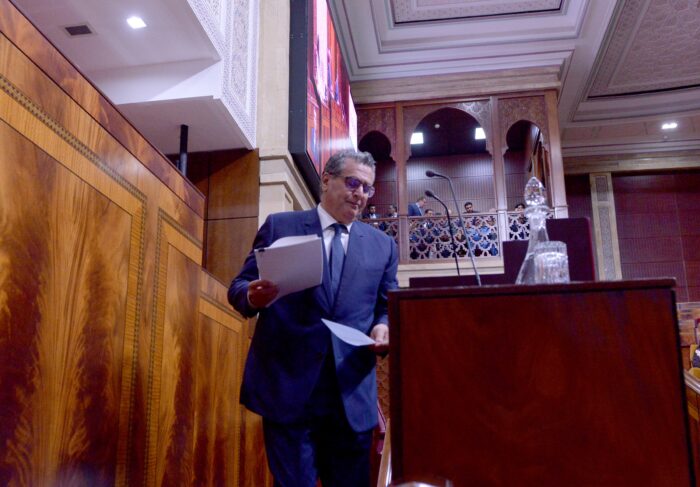Today, more than 1.6 million people are looking for a job in a market struggling to create enough opportunities to meet an ever-growing demand. Between 2023 and 2024, the unemployment rate in Morocco rose from 13% to 13.3%, with an additional 58,000 unemployed individuals—42,000 in urban areas and 15,000 in rural areas—according to the latest figures from the High Commission for Planning (HCP). These are levels never recorded since at least the institution’s creation in the early 2000s.
But while the Executive continues to cite drought as the cause of this hemorrhage, other, more structural factors are at play. Deep dysfunctions that, with more effective governance, could have been anticipated and avoided.
The forest hidden through the trees
“The current unemployment rate is alarming. Even at the height of the COVID crisis, it remained lower, around 12%”
“The current unemployment rate is alarming. Even at the height of the COVID crisis, it remained lower, around 12%. Climate fluctuations and, to a lesser extent, inflation and the global economic situation have only exacerbated structural dysfunctions that have persisted for years. A better understanding of market realities and the timely implementation of appropriate measures would have helped limit the damage,” laments Adil Khalis, an economist specializing in employment and entrepreneurship, in an interview with TelQuel.
Among these failures is the economy’s inability to generate enough jobs due to a lack of innovation and diversification. According to the researcher, Morocco’s underdeveloped economic structure has struggled to maintain its competitiveness and adapt to changing global demand, particularly in the technological sector. Likewise, greater diversification would have reduced dependence on the agricultural sector and encouraged the emergence of new production lines, new businesses, and new professions in industry and services.
The lack of productivity in our economy has been repeatedly highlighted by the World Bank, particularly in its latest report: “Unlocking the Potential of Morocco’s Private Sector to Boost Growth and Job Creation.”
According to the Bretton Woods institution, tackling unemployment inevitably requires a structural transformation of the private sector, which still suffers from a low density of high-growth enterprises. “This is a problematic aspect of the private sector because, in other contexts, it has been shown that these companies contribute disproportionately to job creation,” emphasize the World Bank analysts.
Training for integration
Among the other factors hindering job creation is the mismatch between training programs and labor market needs, which has led to a surge in unemployment among young graduates: 19.6% are jobless. More broadly, between 2023 and 2024, the unemployment rate among young people aged 15 to 24 rose from 35.8% to 36.7%, while for those aged 25 to 34, it increased from 20.6% to 21%.
In addition to inadequate training programs, Adil Khalis points to the lack of effective mechanisms to connect young graduates with employers, particularly in small and medium-sized enterprises (SMEs), which often lack the resources to structure their recruitment processes. “If there is no mechanism to facilitate the matching of supply and demand in the job market, we end up with unfilled positions and unemployed graduates,” he stresses.
Last but not least, the rising unemployment trend is also the result of a gap between government announcements and their actual implementation on the ground. Although several programs have been launched in recent years to support investment and boost employment, their deployment has been hindered by administrative obstacles and a lack of coordination between the various stakeholders, the economist regrets.
What future?
To break out of this vicious cycle, there is no miracle solution. According to Adil Khalis, the future of the labor market in 2025 will largely depend on the effectiveness of government measures. Two scenarios are therefore possible.

In the first, more pessimistic scenario, the economic outlook would remain bleak. Two major factors would hinder job creation: on one hand, the decline in agricultural value-added due to persistent drought, which would have a negative ripple effect across all sectors, limiting indirect job opportunities; on the other hand, the continuation of investments that lack innovation and generate few jobs, sustaining a deficit of opportunities for workers. These combined constraints would slow the recovery of the labor market, keeping the unemployment rate at its 2024 level.
In the second, relatively optimistic scenario, the labor market would see a slight improvement. Job losses in the rural sector could stabilize or even decrease, thanks to a partial recovery in agriculture, with an expected increase in agricultural value-added of 4.1% in 2025, combined with a projected growth of 3.6% in non-agricultural sectors. The dynamism of these sectors, particularly in services and construction, could further stimulate job creation, explains the researcher.
However, this scenario is only possible if the projects outlined in the 2025 Finance Law are implemented diligently. Accelerating employment programs, supporting entrepreneurship, and promoting private investment are essential to boosting job creation.
“The time for promises is over; now is the time for action. To meet citizens’ expectations and ensure better economic inclusion, the government must fully mobilize to restore confidence among workers and investors. 2025 will be a pivotal year for Morocco’s labor market. The political and economic choices made in the coming months will determine whether the country manages to revive employment or remains stuck in worrisome stagnation,” concludes Adil Khalis.
Written in French by Safae Hadri, edited in English by Eric Nielson
Government Action Plan for Employment
Presented during the latest Government Council meeting, which took place as we went to press, the Government Action Plan for Employment aims to “address the new challenges of the labor market in relation to structural climate change and the repercussions of economic and social transformations caused by the COVID-19 crisis and global geostrategic crises,” according to the announcement statement.
The budget allocated to this plan amounts to 14 billion dirhams for the year 2025. The objectives of the plan are to support investment, restructure and expand active employment programs, and introduce a new government initiative specifically targeting the rural population.




